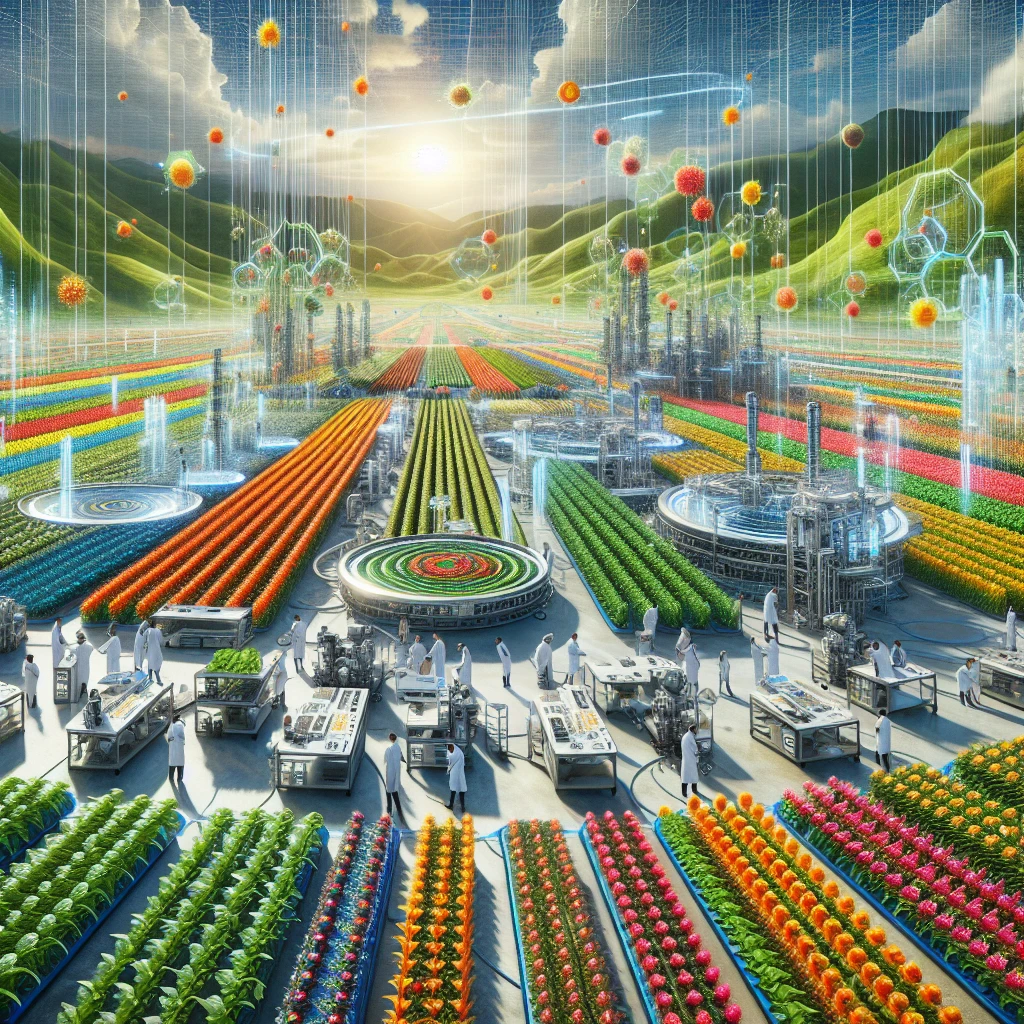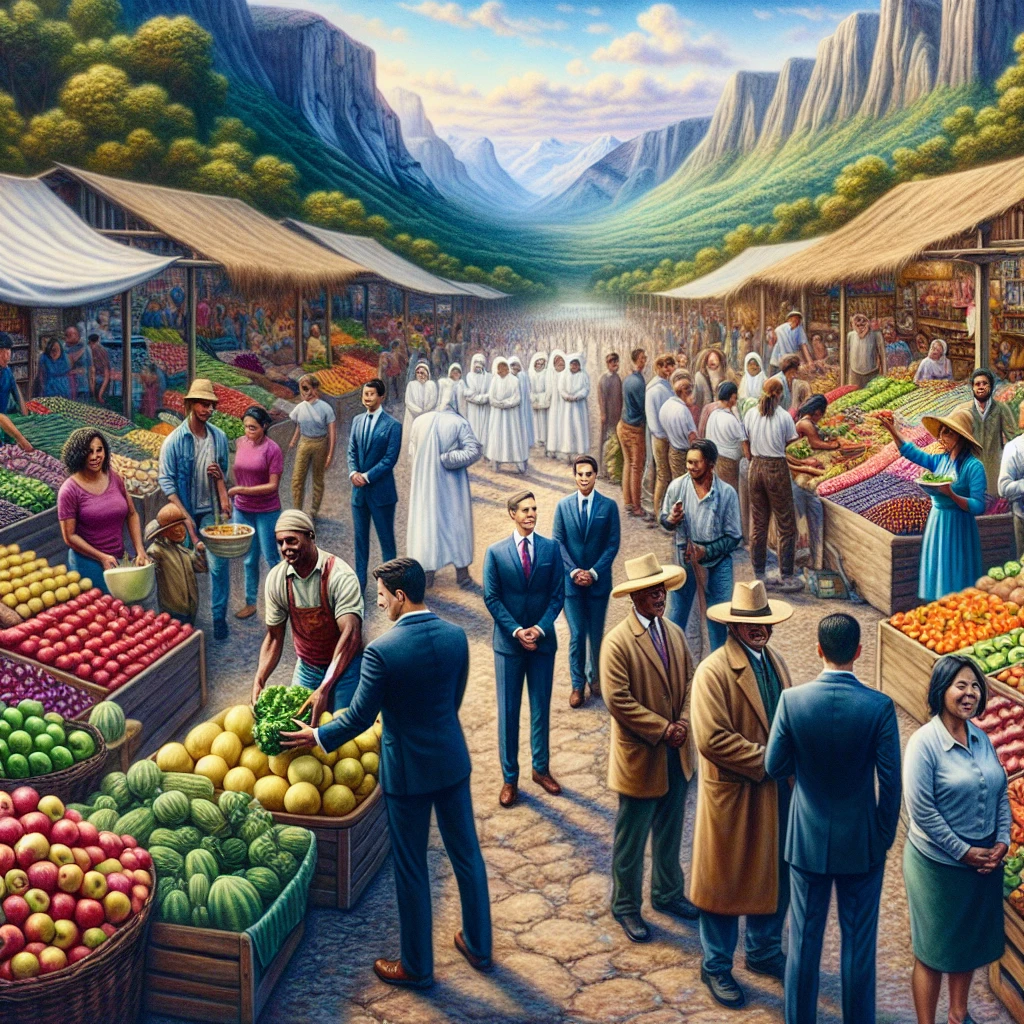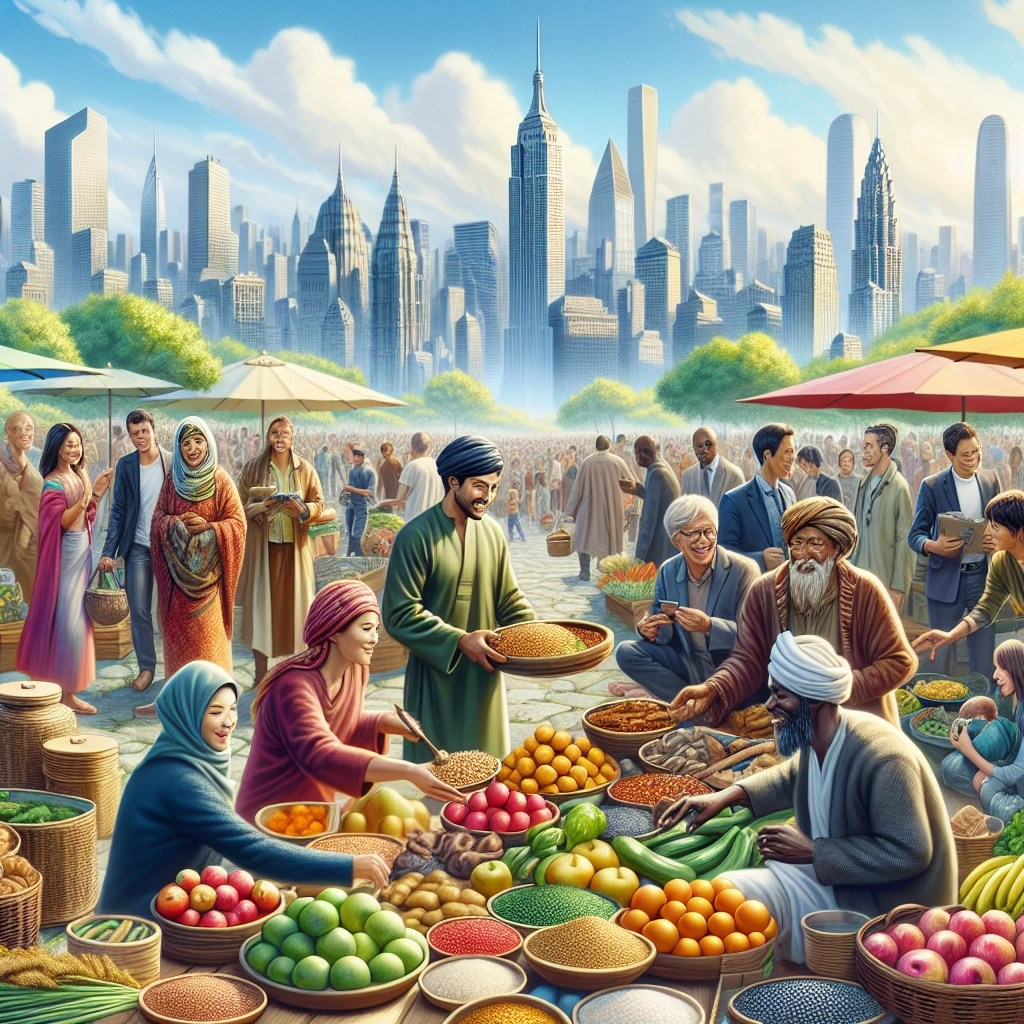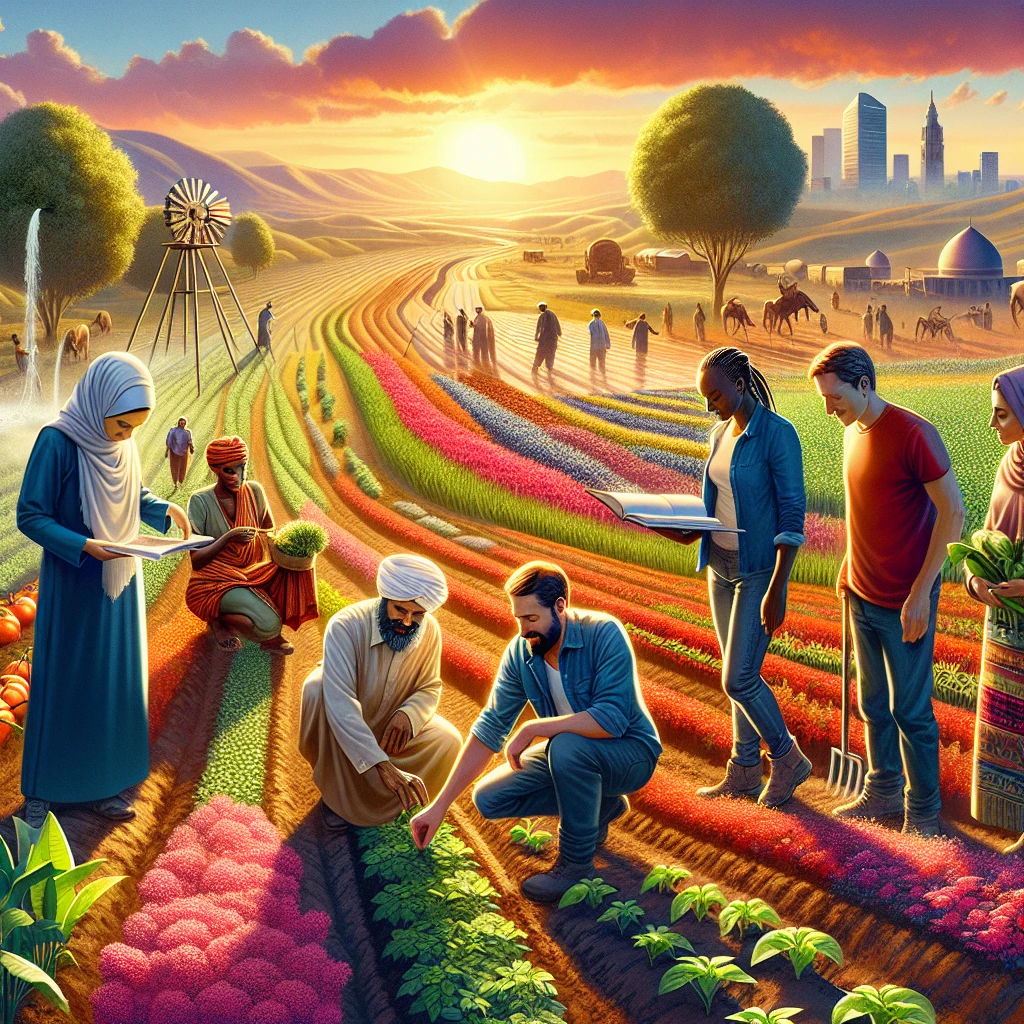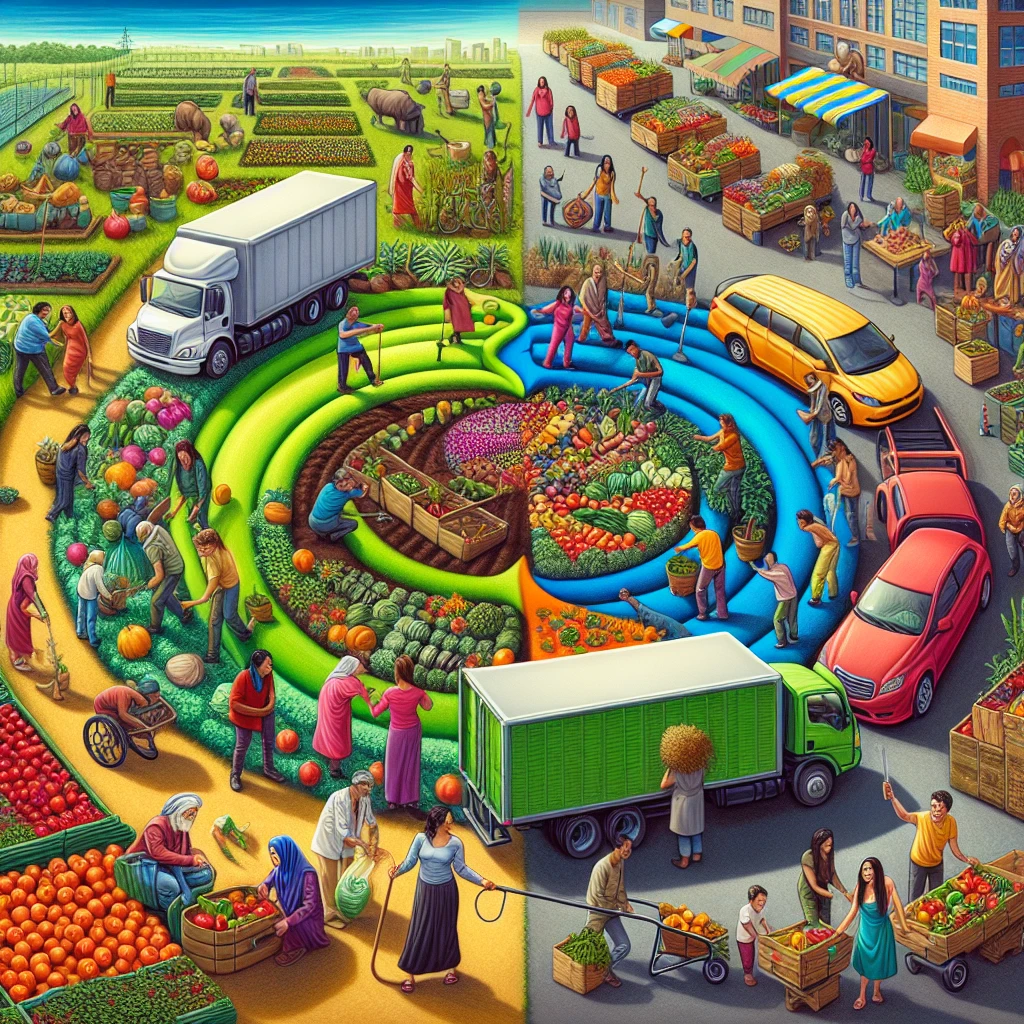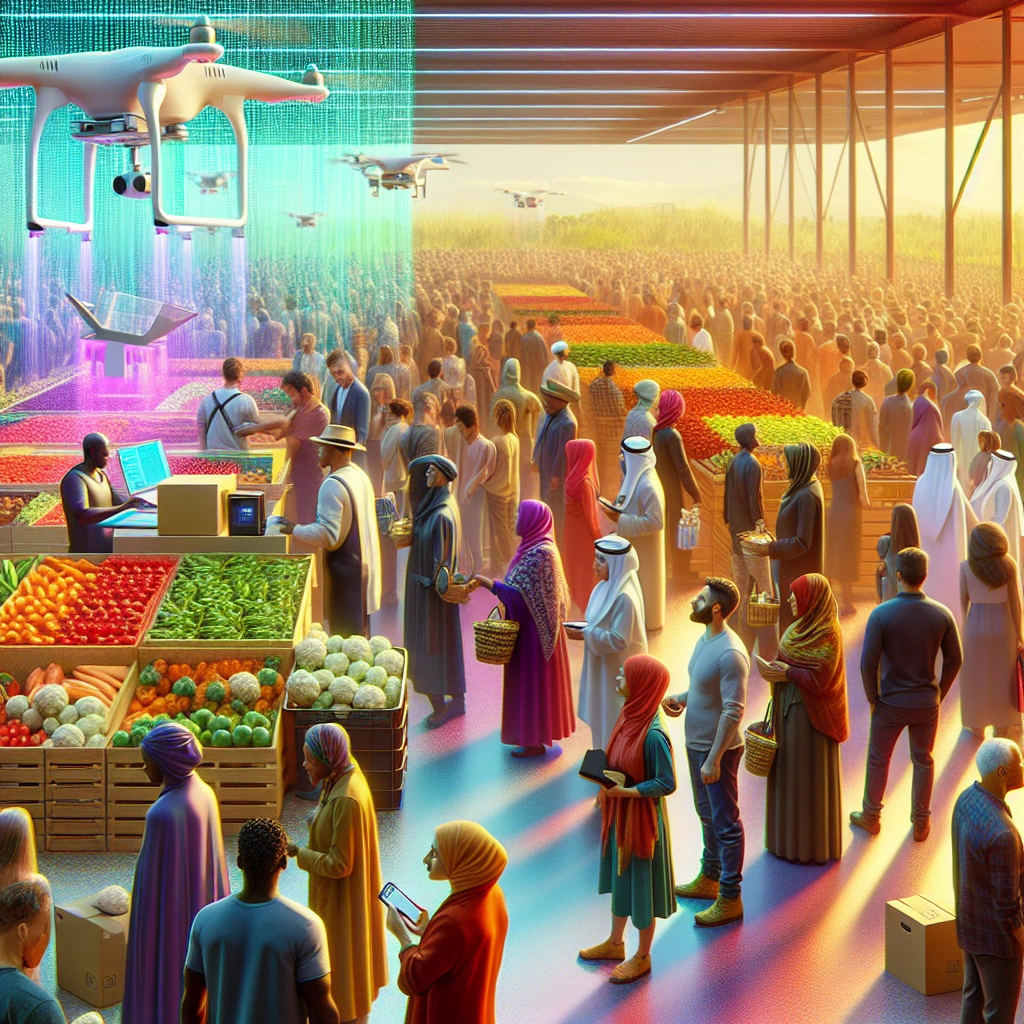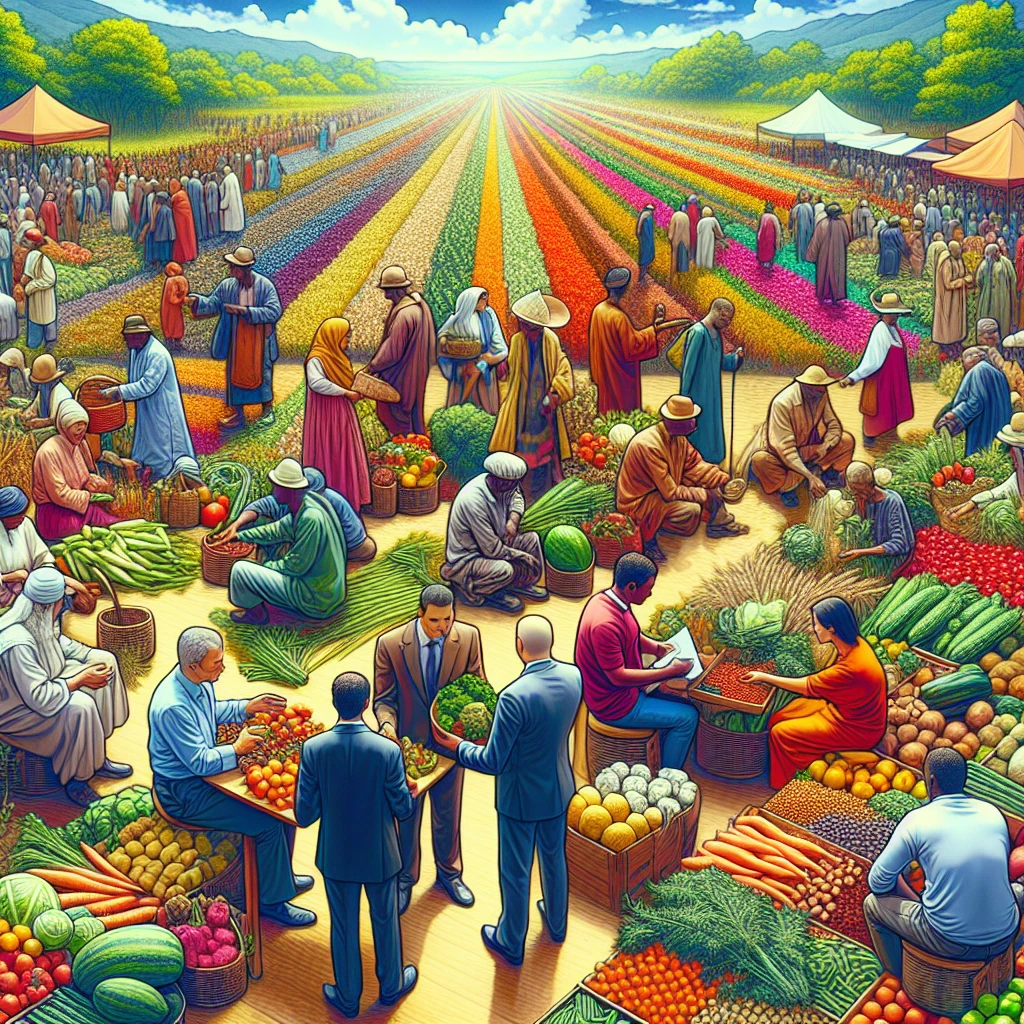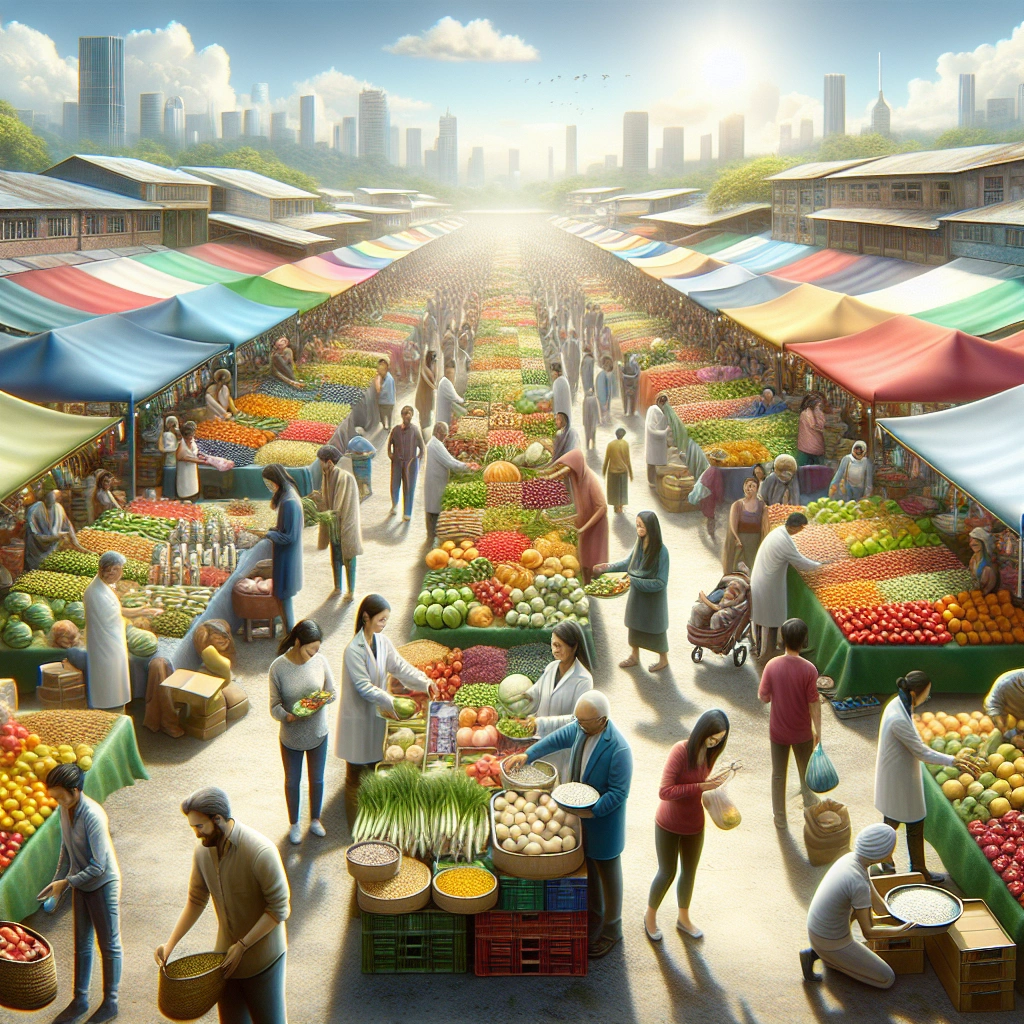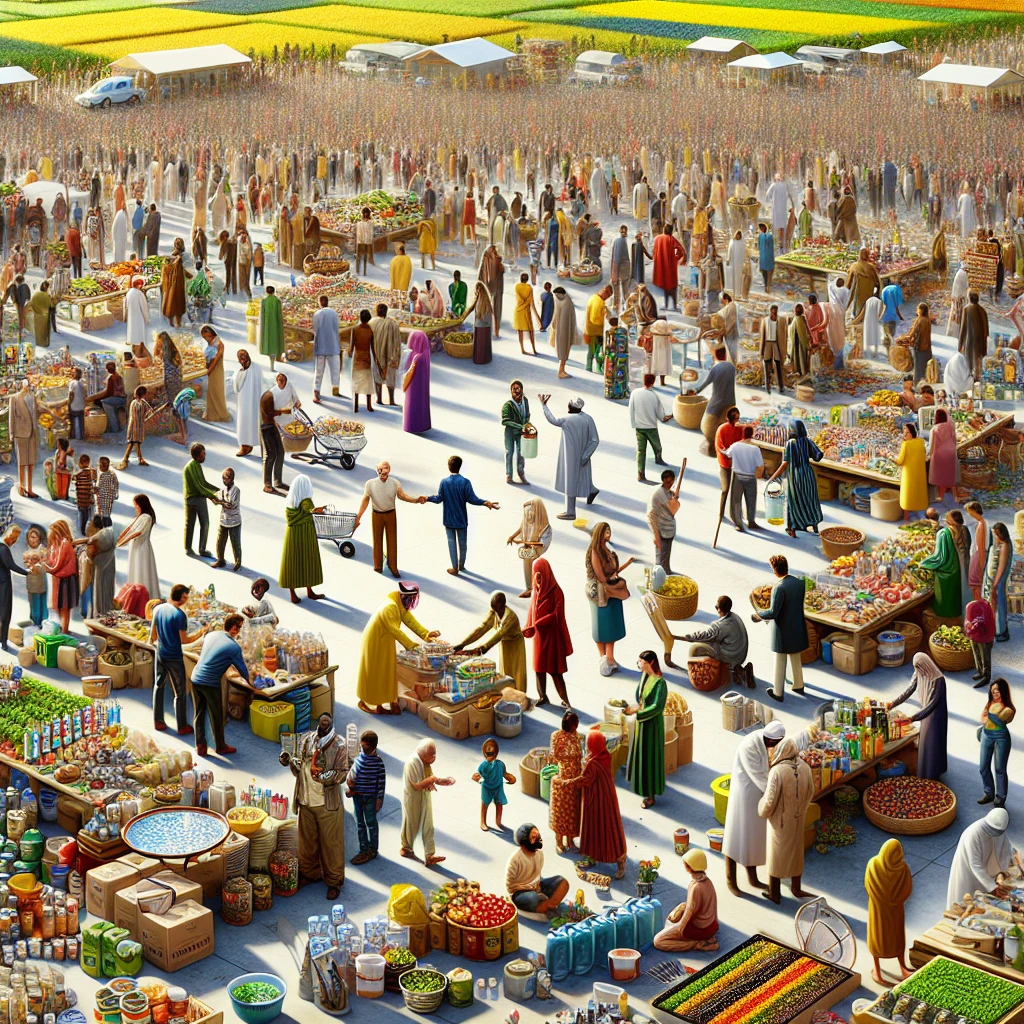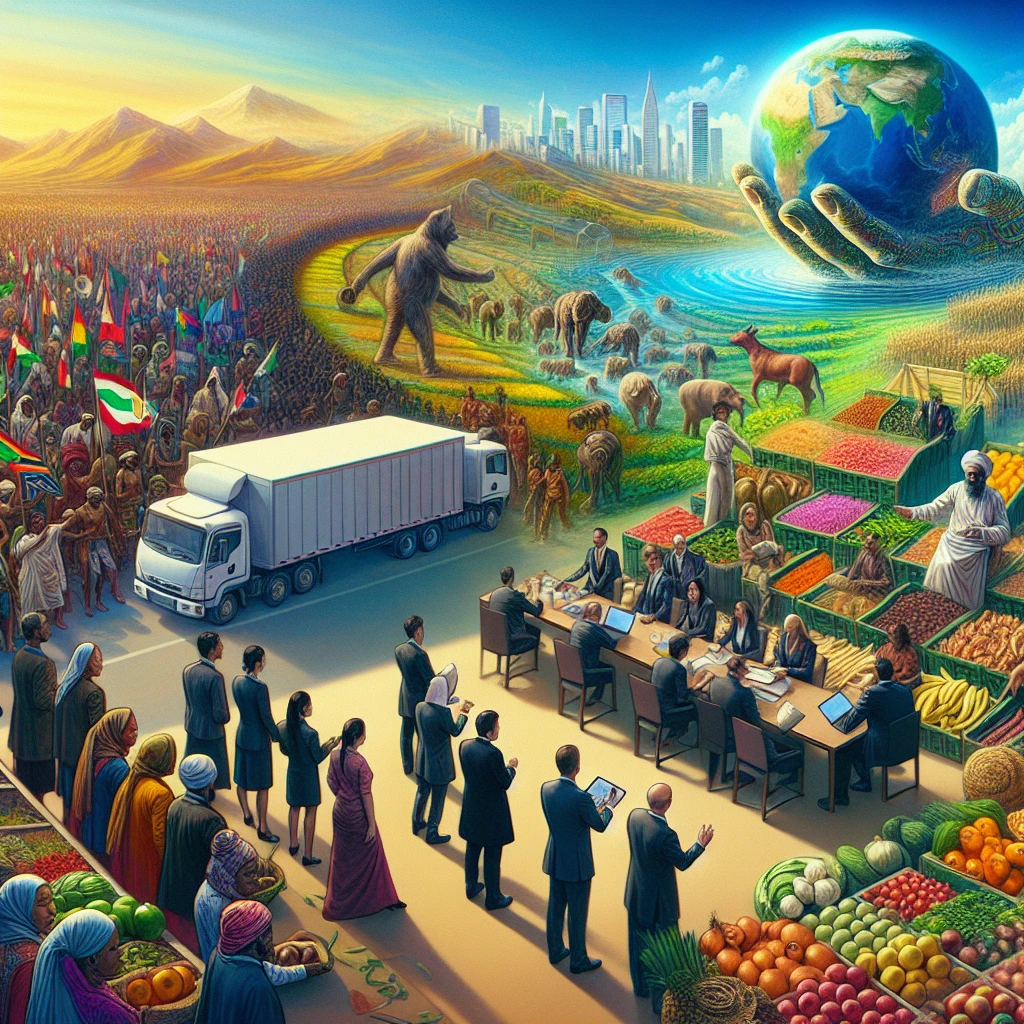

Food shortages are a pressing global issue, with approximately 2.4 billion people facing moderate to severe food insecurity. This crisis is exacerbated by factors such as climate change, economic shocks, and conflict, leading to a steep rise in global hunger.
It is crucial to address and combat food shortages on a global scale to prevent further suffering and potential consequences such as inflation and the reversal of hard-earned development gains.
Combatting food shortages is of utmost importance to ensure the well-being and survival of millions of people around the world. Different countries and organizations have been employing various strategies to address this issue, including providing emergency food security response projects, supporting people in vulnerable areas, and investing in sustainable agriculture and food production.
Efforts to tackle the root causes of food shortages, such as climate change and armed conflict, are also essential in creating long-term solutions to this crisis.
By addressing and combating food shortages on a global scale, countries and organizations can work towards ensuring a more food-secure and stable future for the world’s population. The impact of food shocks is felt everywhere, and it is imperative for international collaboration and support to provide the necessary resources to address this pressing issue and prevent the further escalation of the global hunger crisis.
Check out this Youtube video: Explore how different countries and organizations address and combat food shortages on a global scale.
Understanding the Causes of Food Shortages
Climate change poses a significant threat to food security, leading to reduced agricultural productivity through extreme weather events and shifts in temperature and precipitation patterns. These environmental factors disrupt food availability, access, and quality, contributing to the global food crisis.
Growing political unrest and trade disruptions, whether at international or internal levels, limit the availability and access to food. The erratic actions of repressive regimes and internal conflicts exacerbate food insecurity, posing a serious challenge to combatting food shortages on a global scale.
Economic factors such as poverty, unemployment, lack of affordable housing, and chronic health conditions significantly impact food security. The lack of access due to insufficient food amounts, poor delivery, and high food costs underscores how economic challenges contribute to the prevalence of food shortages.
| Environmental Factors | Political and Economic Factors |
|---|---|
| Climate change | Political unrest and trade disruptions |
| Extreme weather events | Erratic actions of repressive regimes |
| Shifts in temperature | Economic challenges affecting access to food |
Environmental, political, and economic factors play crucial roles in understanding and addressing the causes of food shortages globally. Efforts to combat these crises must take into consideration the multi-faceted nature of the challenges posed by these factors.
Strategies Implemented by Different Countries
Government policies and programs to address food insecurity
The U. S. Government’s Global Food Security Strategy 2022-2026 aims to end global hunger, poverty, and malnutrition through a whole-of-government approach. This integrated strategy focuses on providing assistance to vulnerable populations, promoting sustainable agricultural development, and empowering local communities to improve food security.
International cooperation and aid for countries facing severe food shortages
The European Union (EU) plays a significant role in addressing global food crises by providing humanitarian food assistance to affected countries and investing in measures to reduce the risk of famine. Additionally, international organizations like the World Food Programme offer crucial humanitarian assistance to support populations vulnerable to food insecurity, contributing to the global efforts to combat severe food shortages.
Efforts by International Organizations
The role of international organizations in addressing food shortages is pivotal. The United Nations (UN) spearheads efforts through its Food and Agriculture Organization (FAO) to ensure access to high-quality food for all.
Established in 1963, the World Food Programme (WFP) focuses on eliminating hunger and malnutrition, especially in the critical first 1,000 days of a child’s life. Additionally, the World Bank has significantly scaled up its initiatives to strengthen food systems, reduce risks, and enhance food security globally.
Role of organizations such as the UN, World Food Programme, and World Bank in addressing food shortages
The UN, FAO, WFP, and World Bank play critical roles in addressing food shortages through various long-term and short-term programs. The FAO and WFP aim to eliminate hunger and malnutrition, while the World Bank focuses on bolstering food security and reducing risks to avert severe food crises.
Collaborative efforts between countries and international organizations to combat food insecurity
Collaborative efforts between countries and international organizations are essential to combat food insecurity. The coordination of resources, expertise, and support from entities like the UN, FAO, WFP, and World Bank enhances the effectiveness of interventions aimed at addressing food shortages on a global scale.
| Organizations | Key Initiatives |
|---|---|
| UN | Food security, nutrition, and access to high-quality food |
| FAO | Eliminating hunger, food insecurity, and malnutrition |
| WFP | Targeted programs for the first 1,000 days of a child’s life |
| World Bank | Strengthening food systems and reducing risks for food security |
Innovations in Agriculture and Food Production
Technological advancements to improve food production and distribution
Smart Sensors: The use of smart sensors in agriculture revolutionizes food production by providing real-time data on soil conditions, moisture levels, and crop health. This technology allows farmers to optimize irrigation and fertilizer use, resulting in increased yields and more efficient resource allocation.
3D Printing and Robotics: Integrating 3D printing and robotics into food production lines has enabled manufacturers to create personalized nutrition options and streamline the food manufacturing process. This advancement enhances customization and efficiency in food production, meeting the evolving needs of consumers and ensuring a more sustainable approach to food distribution.
Table:
| Technological Advancements | Impact |
|---|---|
| Smart Sensors | Real-time data for optimized resource allocation and increased yields |
| 3D Printing and Robotics | Personalized nutrition and streamlined food manufacturing process |
Sustainable farming practices to increase food availability
Sustainable Agriculture: Embracing sustainable agriculture practices is crucial to meeting society’s current food and textile needs without compromising the resources available for future generations. This approach aims to optimize natural resource utilization, allowing for the regeneration of productive capacity while minimizing environmental impact.
Process Innovations: At the farm level, process innovations such as higher-yielding seeds and more efficient production techniques significantly enhance agricultural productivity. These innovations play a vital role in maximizing food availability and meeting the growing global demand for sustenance.
Table:
| Sustainable Farming Practices | Impact |
|---|---|
| Sustainable Agriculture | Optimize natural resources and minimize environmental impact |
| Process Innovations | Maximize agricultural productivity and meet growing global food demand |
By adopting these technological advancements and sustainable farming practices, both food production and distribution can be enhanced, leading to increased food availability and combating global food shortages.
Addressing Food Shortages in Developing Countries
Challenges faced by developing countries in combating food shortages
The challenges faced by developing countries in combating food shortages are multi-faceted and complex. These nations often struggle with inadequate infrastructure for food storage and transportation, limited access to modern agricultural technologies, and insufficient investment in agricultural research and development.
Additionally, climate change effects such as droughts, floods, and extreme weather further exacerbate these challenges. Moreover, political instability, conflict, and economic hardships can hinder the ability of these countries to address and combat food shortages effectively.
Success stories and innovative solutions in addressing food insecurity in developing nations
Success stories in addressing food insecurity in developing nations often revolve around innovative solutions that enhance agricultural productivity and improve access to nutritious foods. For example, partnerships between international organizations and governments have facilitated the implementation of sustainable farming techniques and the introduction of climate-resilient crop varieties.
Furthermore, investment in irrigation infrastructure and agricultural education has empowered local communities to become more self-sufficient in food production. These success stories highlight the significance of collaboration, technology transfer, and targeted interventions in overcoming food insecurity challenges in developing countries.
| Challenges | Solutions |
|---|---|
| Inadequate infrastructure | Sustainable farming techniques |
| Limited access to technology | Climate-resilient crop varieties |
| Climate change effects | Investment in irrigation infrastructure |
| Political instability | Agricultural education and empowerment |
Addressing food shortages in developing countries requires a comprehensive approach that addresses the multifaceted challenges faced by these nations. By implementing innovative solutions and fostering collaborative partnerships, it is possible to make significant strides in combatting food insecurity and improving the livelihoods of people in these regions.
Role of NGOs and Non-profit Organizations
Contributions of non-governmental organizations in addressing food shortages
Non-governmental organizations (NGOs) play a crucial role in addressing food shortages worldwide by providing humanitarian assistance, food distributions during emergencies, and implementing long-term initiatives such as school meal programs. NGOs like the World Food Programme swiftly and effectively support vulnerable populations, ensuring access to essential food resources in times of crisis.
Their impactful contributions significantly alleviate hunger and food insecurity, offering immediate relief and sustainable solutions to communities in need.
Community-based initiatives to alleviate food insecurity at the local level
At the local level, community-based initiatives spearheaded by NGOs focus on improving access to food and addressing food security challenges. These interventions are vital in ensuring physical and economic access to food, particularly for vulnerable populations.
Through collaborative efforts and participatory interventions, NGOs enhance local food security, empowering communities to overcome food insecurity and build sustainable solutions to hunger. By partnering with local organizations and leveraging community resources, NGOs effectively address food shortages and promote long-lasting food security solutions at the grassroots level.
| NGO Initiatives | Key Contributions |
|---|---|
| World Food Programme | Provides rapid humanitarian assistance and long-term support to vulnerable populations globally |
| Local Community Programs | Implement collaborative initiatives to improve access to food and alleviate food insecurity at the grassroots level |
The contributions of non-governmental organizations in addressing food shortages are invaluable, as they provide immediate relief and work collaboratively with local communities to combat food insecurity. Their efforts demonstrate a commitment to sustainable solutions and offer hope for a future where hunger is no longer a pervasive issue.
Impact of Climate Change on Food Security
Effects of climate change on agriculture and global food supply
The impact of climate change on agriculture and the global food supply is significant. Moderate warming and increased carbon dioxide levels can stimulate plant growth, but severe warming, floods, and droughts can lead to reduced yields.
Heavy precipitation, worsened by climate change, can erode soil and deplete its nutrients. Moreover, rising greenhouse gases, warmer weather, and altered precipitation patterns have adverse effects on both the quantity and quality of food crops, posing a threat to global food security.
Adaptation strategies to mitigate the impact of climate change on food shortages
To mitigate the impact of climate change on food shortages, diverse and innovative adaptation strategies are essential. Diversifying food sources and agricultural techniques helps in reducing risks associated with climate change.
The adoption of water management systems that can minimize crop damage from floods and droughts becomes crucial. Additionally, fostering resilience and flexibility in agricultural production is vital for combating the challenges posed by climate change and ensuring food security for the global population.
Addressing Food Waste and Distribution Challenges
Efforts to reduce food waste and improve food distribution systems
Countries and organizations are implementing various strategies to reduce food waste and improve food distribution systems. For instance, some countries have established food surplus redistribution programs, partnering with food banks and non-profit organizations to ensure excess food reaches those in need. Additionally, advancements in technology, such as inventory management systems and smart packaging, are optimizing distribution channels, reducing spoilage, and enhancing supply chain efficiency. Furthermore, educational campaigns and consumer awareness programs are crucial in fostering responsible food consumption habits, ultimately reducing waste.
Initiatives to ensure equitable access to food resources
To ensure equitable access to food resources, several initiatives have been launched globally. Prominent efforts include the establishment of community gardens in urban areas, providing residents with access to fresh produce. Furthermore, policies aimed at incentivizing grocery stores to operate in underserved neighborhoods and initiatives to increase the availability of nutritious food at affordable prices are underway. Additionally, charitable organizations and government initiatives work to alleviate food deserts and enhance access to healthy, affordable food for all communities, promoting food equity and combating food shortages.
| Efforts to Reduce Food Waste | Initiatives for Equitable Access to Food Resources |
|---|---|
| Food surplus redistribution programs | Establishment of community gardens in urban areas |
| Advancements in technology for inventory management | Incentivizing grocery stores to operate in underserved neighborhoods |
| Educational campaigns and consumer awareness programs | Initiatives to increase the availability of nutritious food at affordable prices |
These efforts collectively contribute to addressing food waste and distribution challenges, fostering sustainable practices, and promoting food security across diverse communities and nations. The combined impact of these endeavors is instrumental in mitigating food shortages and ensuring access to nutritious food for all.
Leveraging Technology for Food Security
Role of digital solutions and data analytics in addressing food shortages
Digital solutions and data analytics play a pivotal role in addressing food shortages by providing vital insights for efficient resource management and production. Big data analytics enable farmers to predict optimal planting and harvesting times, maximize resource usage, and prevent food waste.
Additionally, technologies like the Internet of Things (IoT) and smart sensors facilitate early detection of crop pests and diseases, allowing for timely intervention to avert potential yield losses. These innovations empower farmers and food producers to make data-driven decisions, ultimately contributing to enhanced food security and sustainability.
Technological innovations to enhance food security in different regions
Technological innovations are revolutionizing food security across diverse regions by enabling advanced agricultural practices and resource optimization. For instance, artificial intelligence and digital twins enable fast experimentation and troubleshooting, empowering farmers to adapt to varying environmental conditions and optimize crop yields.
Furthermore, the adoption of blockchain technology ensures transparent and secure supply chain management, reducing food fraud and enhancing traceability. These innovations are instrumental in addressing the distinct challenges faced by different regions, reinforcing global efforts to combat food shortages and nourish growing populations.
Public-Private Partnerships for Food Security
Collaboration between governments, businesses, and civil society in addressing food shortages
When it comes to addressing food shortages, collaboration is key. Governments, businesses, and civil society need to work together to implement sustainable solutions.
For example, governments can provide policy support and infrastructure, businesses can leverage their resources and expertise, and civil society can ensure that the most vulnerable populations are not left behind. This collaborative approach ensures a comprehensive and holistic response to food shortages, creating a more resilient and effective system.
Corporate responsibility and initiatives to support food security efforts
Corporate responsibility plays a significant role in supporting food security efforts. Companies have the capacity to drive impactful change through various initiatives.
For instance, corporate social responsibility (CSR) programs can focus on reducing food waste, promoting sustainable agricultural practices, and supporting local communities. Additionally, businesses can use their influence to advocate for policies that prioritize food security and invest in innovative solutions to address underlying issues.
Through these efforts, businesses demonstrate their commitment to addressing food shortages and contribute to meaningful, long-term solutions.
| Organization | Initiative |
|---|---|
| Company A | Invests in sustainable farming practices |
| Company B | Donates excess food to local communities |
| Company C | Advocates for food security policies |
Public-private partnerships play a vital role in addressing food shortages by fostering collaboration and leveraging corporate responsibility to support sustainable food security efforts.
Addressing Food Shortages in Conflict Zones
Challenges of addressing food shortages in areas affected by conflict and instability
In conflict zones, addressing food shortages is a daunting task due to multiple challenges such as disrupted food supply chains, destroyed infrastructure, and limited access to farming resources. Additionally, the safety of aid workers and beneficiaries is at risk, hindering effective distribution of food aid.
Humanitarian efforts to provide food aid in conflict-affected regions
Humanitarian organizations play a crucial role in providing food aid in conflict-affected regions by coordinating with local authorities and international agencies to deliver emergency food assistance. They also focus on sustainable solutions, such as promoting agricultural development and providing seeds and tools to help communities become self-sufficient in food production.
| Challenges | Humanitarian Efforts |
|---|---|
| Disrupted food supply chains | Coordinating with local authorities and international agencies for emergency food assistance |
| Destroyed infrastructure | Promoting agricultural development and sustainable solutions |
| Safety risks for aid workers and beneficiaries | Providing seeds and tools for self-sufficiency in food production |
Education and Awareness Campaigns for Food Security
Importance of educating communities about sustainable food practices
Educating communities about sustainable food practices is crucial in addressing food shortages. Countries and organizations can conduct workshops and seminars to teach communities about efficient farming techniques, sustainable agricultural practices, and proper food storage methods. Emphasizing the importance of crop diversity, water conservation, and organic farming can help ensure food security for the long term. Moreover, educating communities about the benefits of consuming locally sourced and seasonal produce can promote sustainability and reduce reliance on imported goods.
Awareness campaigns to highlight the impact of food shortages on vulnerable populations
Raising awareness about the impact of food shortages is essential in mobilizing support for vulnerable populations. Through compelling media campaigns, organizations can shed light on the hardships experienced by those affected by food shortages. By showcasing real-life stories and statistics, these campaigns can appeal to the public’s empathy and drive them to take action. Additionally, highlighting the link between food insecurity and other societal issues like poverty, malnutrition, and health disparities can garner widespread attention and foster collective efforts to combat food shortages.
| Country/Organization | Approach |
|---|---|
| United Nations | Implements educational programs in impoverished regions |
| World Food Programme | Utilizes social media campaigns to spotlight food scarcity |
These initiatives illustrate the power of education and awareness in addressing food shortages and safeguarding the well-being of communities worldwide.
The Role of Policy and Advocacy in Food Security
The importance of policy initiatives in addressing food shortages is paramount in ensuring the well-being of communities worldwide. By implementing and enforcing robust policies, governments and organizations can proactively tackle food insecurity and provide essential support to vulnerable populations.
These initiatives encompass various measures such as subsidizing agricultural production, implementing food distribution programs, and establishing regulatory frameworks to ensure food safety and accessibility.
Advocacy efforts play a crucial role in promoting food security as a global priority. Through effective advocacy, organizations and influential figures can raise awareness about the severity of food shortages, garner support for policy reforms, and mobilize resources to address this pressing issue.
By amplifying the voices of affected communities and fostering partnerships with key stakeholders, advocacy endeavors contribute significantly to advancing sustainable solutions and fostering a collective commitment to combating food insecurity on a global scale.
| Importance of Policy Initiatives | Advocacy Efforts to Promote Food Security |
|---|---|
| Subsidizing agricultural production | Raising awareness about food shortages |
| Implementing food distribution programs | Mobilizing resources to address the issue |
| Establishing regulatory frameworks | Fostering partnership with stakeholders |
Ensuring Food Security in the Face of Global Crises
The global food crisis demands immediate attention and action from different countries and organizations. In the face of pandemics and other global crises, strategies to maintain food security are crucial.
Lessons learned from past crises and their impact on food availability provide valuable insights for combating food shortages. It is essential for nations and organizations to work together to ensure food security and prevent hunger during challenging times.
Recommended Amazon Products for Addressing Food Shortages
Here’s a curated list of products that can help address and combat food shortages on a global scale. These recommendations are based on functionality, price, and reviews.
Aerogarden Indoor Hydroponic Garden


The Aerogarden Indoor Hydroponic Garden is a great solution for addressing food shortages, as it allows for efficient and sustainable indoor food production. Its hydroponic system promotes faster plant growth, providing a steady supply of fresh herbs and vegetables.
However, it may have a higher initial cost compared to traditional gardening methods.
| Pros | Cons |
|---|---|
| Efficient indoor food production | Higher initial cost |
| Sustainable and space-saving | Requires electricity and water |
| Fresh herbs and vegetables year-round |
Emergency Water Storage Containers


Having emergency water storage containers is crucial in addressing food shortages, as access to clean water is essential for food production and consumption during crisis situations. These containers are durable and come in various sizes, providing a reliable water supply for farming and cooking.
However, they may take up space and require proper maintenance.
| Pros | Cons |
|---|---|
| Reliable water supply for farming and cooking | Takes up space |
| Durable and long-lasting | Requires proper maintenance |
| Various sizes available for different needs |
Solar-Powered Portable Generator


A solar-powered portable generator is a practical solution for addressing food shortages, offering a sustainable source of electricity for food production and storage. It is eco-friendly and can be used in off-grid locations, providing power for agricultural equipment and refrigeration.
However, it may have limited capacity compared to traditional generators.
| Pros | Cons |
|---|---|
| Sustainable source of electricity | Limited capacity |
| Eco-friendly and off-grid use | Dependent on sunlight for charging |
| Power for agricultural equipment and refrigeration |
Non-GMO Heirloom Seeds Variety Pack


The Non-GMO Heirloom Seeds Variety Pack is an essential resource for combating food shortages, promoting biodiversity and resilience in food production. These heirloom seeds offer a wide range of fruits, vegetables, and herbs that are free from genetically modified organisms.
However, they require proper storage and care to maintain viability.
| Pros | Cons |
|---|---|
| Promotes biodiversity in food production | Requires proper storage and care |
| Wide variety of non-GMO seeds | Limited shelf life |
| Resilient and sustainable food sources |
Top Recommended Product for Addressing Food Shortages
If you’re looking for the best solution for addressing food shortages, we highly recommend the Aerogarden Indoor Hydroponic Garden (https://www.amazon.com/s?k=Aerogarden+Indoor+Hydroponic+Garden). This product offers efficient indoor food production, sustainable gardening, and a steady supply of fresh herbs and vegetables year-round. Ready to improve your efforts in addressing food shortages? Check out the Aerogarden Indoor Hydroponic Garden today for the best results!


Conclusion
Different countries and organizations have implemented various strategies to address and combat food shortages. These include sustainable agricultural practices, investment in rural infrastructure, and food aid programs to support vulnerable populations.
Additionally, efforts have been made to improve access to education and technology to enhance food production and distribution.
Furthermore, the importance of continued collaboration and innovation in achieving global food security cannot be overstated. It is essential for countries and organizations to work together to share knowledge, resources, and best practices in addressing food shortages.
By fostering partnerships and investing in research and development, the global community can make significant strides towards ensuring that everyone has access to an an adequate and nutritious food supply.
Addressing food shortages requires a multi-faceted approach and a commitment to long-term solutions. It is crucial for different countries and organizations to continue working together in implementing sustainable practices, promoting economic development, and addressing the root causes of food insecurity to achieve lasting impact and improve the livelihoods of people around the world.



